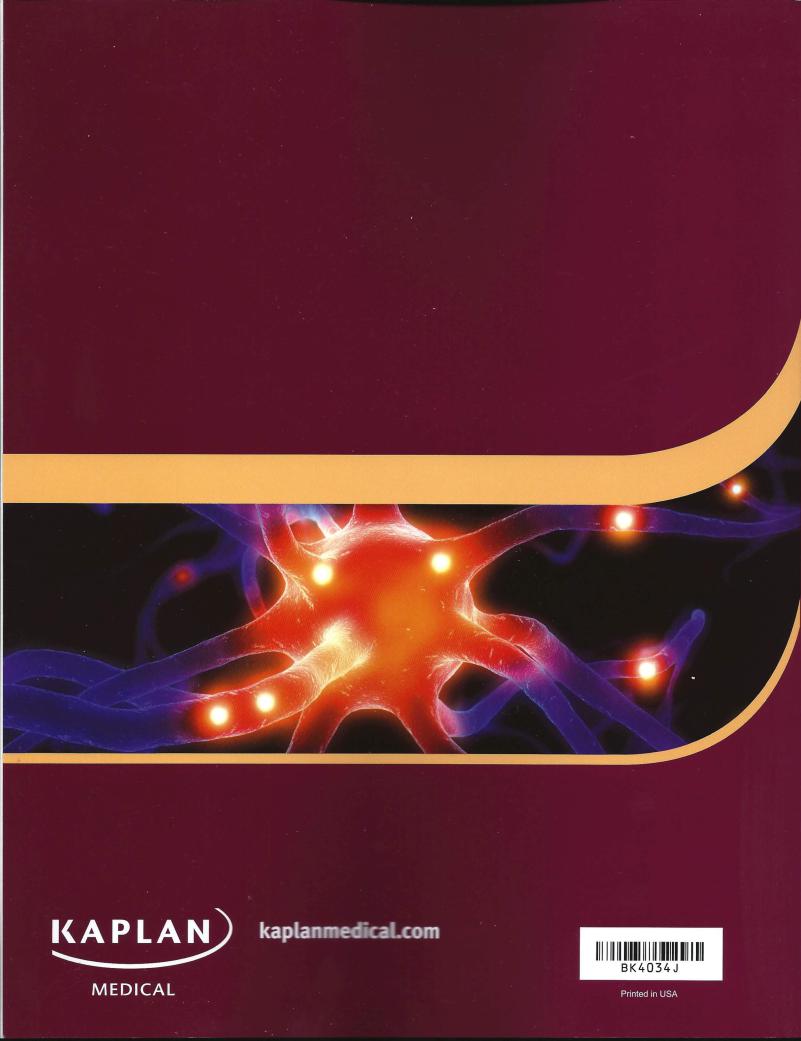
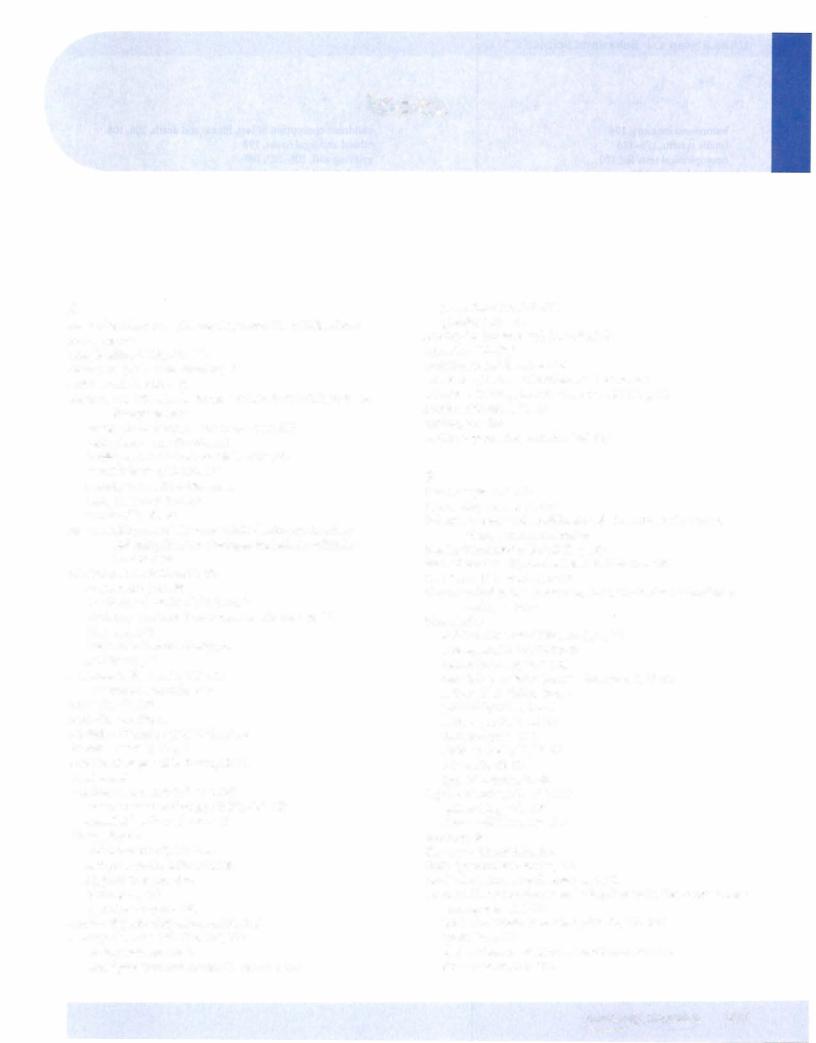
Index
A
Abuse. See Child abuse; Domestic partner abuse; Elder abuse Accuracy, 8-9
Acetylcholine (ACh), 125, 177 Acting out (defense mechanism), 89 Adjustment disorder, 155
Adolescence, 105. See also Sexual behavior in the United States; Teen pregnancy
changes in daily sleep over the life cycle, 123 eating disorders, 150 -151, 151
leading causes ofdeath for adolescents, 48 sexualbehavior, 61, 105, 106
sexually transmitted disease, 63 teen pregnancy, 61-63, 62 teen suicide, 40---41
Age and aging. See Adolescence; Childdevelopment; Elderly and aging; Human development; Infants and infant development
Alcohol and alcoholism, 51-53 as cause ofdeath, 46
CAGE questions for alcoholism, 52
disulfiram (antabuse) and naltrexone treatment, 53 sleep and, 124
stages ofbehavioral change, 53 suicide and, 41
Alzheimer's disease, 48, 168-169 vs. vascular dementia, 170
Amnesia, 156, 176 Anabolic steroids, 55
Analysis ofVariance (ANOVA), 27, 29 Anorexia nervosa, 150, 151
ANOVA (Analysis ofVariance), 27, 29 Antabuse, 53
Antidepressants, 150-151, 184--187 electroconvulsive therapy (ECT), 186--187 sexual side effects of, 185-187
Antipsychotics
adverse effects of, 182-183 antipyramidal reactions to, 182 atypical, 183, 183-184 potencyof, 183
typical vs. atypical, 183
Antisocial personalitydisorder, 158, 159 Anxiety disorders, 151-153, 158, 159
anxietydefenses, 88-91
anxiolytics (antianxiety) meds, 189-190, 190
panic disorders, 152-153 phobias, 151-152
Anxiolytics (antianxiety), 189-190, 190 Aphasias, 172-176
Attachment and loss, 106--107
Attack rate, 2. See also Incidence andprevalence
Attentiondeficit hyperactive disorder (ADHD), 143 Attributable risk (AR), 13
Autism, 142-143
Avoidant personality disorder, 158, 159
B
Basal ganglia, 176--177 Bed-wetting (enuresis), 128
Behavior therapy and modification. See Learning and behavior therapy and modification
BenderVisual Motor Gestalt Test, 100
Benzodiazepines, 51, 54--56, 124, 128, 189-190, 190
Best Interest Standard, 195-197
Bias in study design and research, 9-12, 11-12. See also Incidence and prevalence
Biostatistics
ANOVA (Analysis ofVariance), 27, 29 Chi-square, 13, 15, 27, 28-29 correlation analysis, 27, 28
descriptive statistics (distribution curves), 19-22 inferential statistics, 23-26
probabilityrules, 17-18 review questions, 30-38 statistical power, 26 statistical tests, 27, 27-29 t-tests, 27, 28-29
type ofscales in, 26--27
Bipolardisorder, 147-149, 149 epidemiology of, 146 mood stabilizers, 188-189
Blocking, 86
Blue Cross Blue Shield, 209 Bodydysmorphic disorder, 154
Borderline personalitydisorder, 157, 159
Brain andbehavior. See also Aphasias; Dementia; Neurotransmitters basalganglia, 176--177
brain abnormalities in schizophrenia, 145-146 cerebellum, 177
dysfunctions on common neurologic exams, 173 frontal cortex, 173-174
MEDICAL 213

USMLE Step 1 • Behavioral Science
lesions and memory, 176 limbic system, 175-176 neurophysical tests for, 100 occipital cortex, 175 parietalcortex, 174-175 pons, 177
schizophrenia and, 145 temporal cortex, 174
Broca (aphasia), 172
Brother Fox (Eichner vs Dillon), 195 Bulimia nervosa, 150, 151 Bupropion, 187
Buspirone, 190
c
CAGE questions for alcoholism, 52 Cancer rates, 47--48
cancer mortality rates per 100,000, 47 Carbamazepine, 189
Case-control studies, 12-15, 14-15 Central tendency, 19-22 Cerebellum, 177
Chi-square, 13, 15, 27, 28-29 Child abuse, 109-1 10, 111-112
homicide rate per 100,000 children, 111 Child development, 101-103, 102
bed-wetting (enuresis), 128
changes in daily sleep over the life cycle, 123, 124 child development milestones, 104-105
children's conception ofloss, illness and death, 106, 108 discipline ofchildren and, 106
disorders diagnosed in childhood (DSMV IV), 142-143 HIV and, 46
leading causes of death for children, 48
legal issues pertaining to children, 195-196, 199-200 nightmares and night terrors, 127
Tanner stages for pubic hair, 105 teeth-grinding (bruxism), 128
Clinical trials, 14-16 Cohort studies, 12-15, 14-15 Competency, 195-199 Conduction (aphasia), 172 Confidence intervals, 23-24 Confidentiality, 200 Control groups, 15-16 Conversion disorder, 154
Coronary Prone Behavior Pattern, 97 Correlation analysis, 27, 28
Court cases, 195-196 Creutzfeldt-Jakob disease, 170 Cross-sectional studies, 12-15, 14-15 Crude rates, 5, 6
D
Death and mortality in United States, 43. See also Morbidityand mortality; Suicide
causes ofdeath patterns in minority groups compared with whites, 48
children's conception ofloss, illness and death, 106, 108 ethical andlegal issues, 198
grieving and, 106--107, 107
number ofdeaths per leading causes of, 43, 48 stages of adjustment to dying, 107
top 3 leading causes ofdeath per age group, 48 top 3 non-genetic causes of death in U.S., 46
Defense mechanisms, 85-95 anxiety defenses, 88-91 common defense mechanisms, 92 immature defenses, 85-91 mature defenses, 91-92
narcissistic defenses, 85-86 review questions, 93-95
transference, 92
Delirium, vs. dementia, 167-168 Dementia
Alzheimer's, 48, 168-169
Alzheimer's disease vs. vascular dementia, 170 Creutzfeldt-Jakob disease, 170
HIV/AIDS and, 171 Huntington chorea, 170
Normal pressure hydrocephalus, 171 Parkinson's disease, 171
Pick disease, 170 vasculardementia, 169 vs. delirium, 167-168 Wilson disease, 171
Denial, 86
Dependent personality disorder, 158, 159 Depersonalization disorder, 156, 159 Depression, 147-149
antidepressants, 150-151, 184-187 behavioral models of, 79-80 electroconvulsive therapy (ECT), 186-187 epidemiology of, 146
SeasonalAffective Disorder (SAD), 148 sleep and, 125, 148-149
suicide and suicidal ideation in, 148 vs. grieving, 107
Descriptive statistics, 19-22. See also Distribution curves Detaining patients, 201
Diagnostic and Statistical Manual IV (DSM IV), 141-165 5 major diagnostic axes of, 141-142
adjustment disorder, 155 anxiety disorders, 151-153
attention deficit hyperactive disorder (ADHD), 143 autism, 142-143
disorders diagnosed in childhood, 142-143 dissasociative disorder, 155-156
eating disorders, 150-151, 151 example ofmulti-axal diagnoses, 141 mood disorders, 147-149 personality disorders, 156--158, 159 post-traumatic stress disorder, 153 review questions, 160-165 schizophrenia, 143-147
somatform disorders, factitious disorders, and malingering, 87, 154-155, 155
214 MEDICAL

Index
Diagnostic-relatedgroups (DRGs), 21 1-212 Disease rates, 1-6, 46-47
cancer mortality rates per 100,000, 47 causes ofdeathper 100,000, 47 correlated with age, 6
mandatory reportable diseases, 46 Displacement (defense mechanism), 88 Dissasociative disorders, 91, 155-156
Dissociative identity disorder (multiple personality), 156 Distribution curves
central tendency in (mean, mode and median), 19 skewed, 19, 20
standard deviations, 20-22, 21-22 Divorce. See Marriage and divorce Do Not Resuscitate (DNR) orders, 201 Domestic partner abuse, 111-112, 112 Dopamine, 125, 148, 178, 183
schizophrenia and, 145 Drug abuse. See Substance abuse
DSM IV. See Diagnostic and Statistical Manual IV (DSM IV) Duloxetine, 187
E
Eating disorders, 150-151, 151 Ecstasy (MDMA), 55
Elderly and aging, 108-109
changes in daily sleep over the life cycle, 123, 124 disease rates correlated with age, 6
elder abuse, 112
leading causes ofdeath, 48 suicide and, 41
suicide rates byage and ethnicity, 109 Electroconvulsive therapy (ECT), 186-187 Enkephalins, 179
Enuresis (bed-wetting), 128
Epidemiology, 1-6. See also Biostatistics; Clinical trials; Incidence and prevalence; Observational studies; Screening tests; Study design and research
defined, 1
ofdementias, 168-169 ofmood disorders, 146
ofobsessive-compulsive disorder, 152 ofpersonality disorders, 159
ofschizophrenia, 143 ofsubstance abuse, 56 ofsuicide, 41 probability rules, 17-18
review questions, 9, 14, 18, 30-38
Ethical and legal issues. See also Physician-patient relationship competency, 195-199
legal issues pertaining to children, 195-196, 199-200 mandatory reportable diseases, 46
review questions, 202-207
rules related to relevantlegal opinions, 196-201 selected important court cases, 195-196
Ethnicity. See Race and ethnicity Euthanasia and assisted suicide, 198
F
Factitious disorder, 155
Familylife in United States. See also Death and mortality; Health Care Utilization and payment; Morbidity and mortality; Suicide
marriage and divorce, 39-40
socioeconomic status (SES), 39-41, 52, 149, 151 FDA approval process, 15
Feeding tubes, 198
Fetal alcohol syndrome (FAS), 52, 142 Freud, Sigmund, 85, 92
Frontal cortex, 173-174 Fugues, 155
G
GarnrnaArnino-butyric Acid (GABA), 54, 79, 125, 127, 179, 188-190
Global aphasia, 173 Glutarnic acid, 179
Good SamaritanLaws, 200 Grieving, 106-107
vs. depression, 107
H
Halsted-Reitan Battery, 100
Health. See Physiologic andphysical health
Health care utilization and payment. See also Physician-patient relationship
capitations as potential payment method, 45 general trends in, 44
government methods ofpayment, 45, 211-212 HIVIAIDS and, 45-46
HMOs, 210 hospitalization and, 45 mental illness, 44
nongovernrnent methods ofpayment, 209-210 Health insurance. See Health care utilization and payment Health Maintenance Organizations (HMOs), 210 Hemispheric dominance, 172
Histrionicpersonality disorder, 157, 159 HIV/AIDS, 16, 45-46
dementia and, 171 HMOs, 210 Homicides in U.S.,43
homicide rateper 100,000 children, 111 Homosexuality, 66-67
genderidentity and preferred sexualpartner ofbiologicmales,65 Hospitalization, 45
Human development. See also Adolescence; Child development; Elderly and aging; Infants and infant development
attachment and loss and, 106-108 bed-wetting (enuresis), 128
changes in daily sleep over the life cycle, 123, 124 child abuse, 109-1 10, 111-112
child sexual abuse, 1 1 1
domestic partner abuse, 111-112, 112
MEDICAL 215
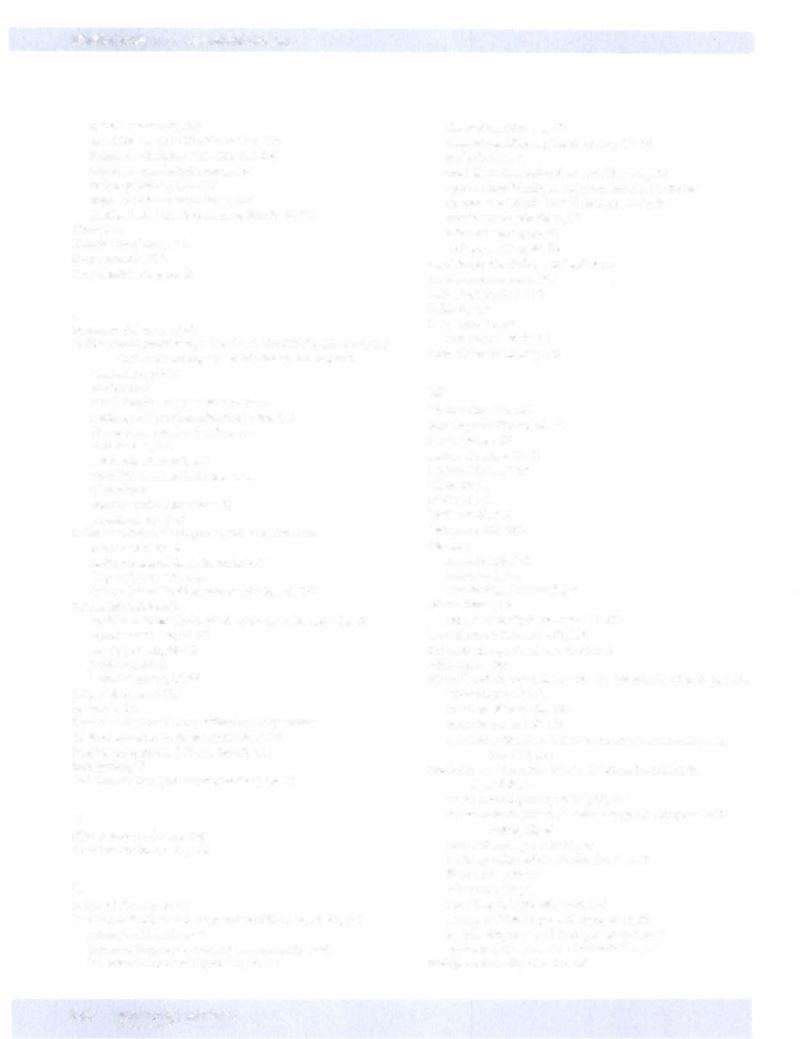
USMLE Step 1 • Behavioral Science
general patterns in, 101
homicide rate per 100,000 children, 111 infants and toddlers, 101-103, 104-105 nightmares and night terrors, 127 review questions, 1 13-117
stages of adjustment to dying, 107
Sudden Infant Death Syndrome (SIDS),49, 126 Humor, 91
Huntington chorea, 170 Hypochondria, 154 Hypothesis testing, 24-25
I
Immature defenses, 85-91
Incidence and prevalence, 4. See also Clinical Trials; Observational studies; Screening tests; Study design and research
"prevalence pot;' 3 attack rate, 2
calculating for lung cancer example, 5 crude, specific, and standardized rates, 5, 6 disease rates correlated with age, 6 incident rate, 1-2
mood disorders and, 149 morbidity and mortalityrate,4-6 ofobesity, 3
point vs. period prevalence, 3 prevalence rate, 2-3
Infants and infant development, 101-103, 104-105 infant mortality, 49
leading causes ofdeath for infants, 48 sleep and, 123, 124, 124
Sudden InfantDeath Syndrome (SIDS), 49, 126 Inferential statistics, 25
confidence intervals for relative risk and odds ratios, 23-24 hypothesis testing, 24-25
null hypothesis, 24-26 p-value in, 24-26 statistical power, 26, 26
Informedconsent, 199 Insomnia, 127
Insurance. See Health care utilization and payment Intellectualization (defense mechanism), 89 Intelligence quotient (IQ), 98, 98-99, 142 Introjection, 87
Isolation ofaffect (defense mechanism), 88-89
K
Kluver-Bucy syndrome, 176
Korsakoff syndrome, 53, 176
L
Learned helplessness, 79
Learning and behaviortherapy and modification, 73-84, 127 an.xiety and learning, 80
behavioral approaches to pain management, 80-81 behavioral models of depression, 79-80
classical conditioning, 73
classical conditioningbased therapy, 77, 79 in alcoholism, 53
modeling, observational, or social learning, 76 operant conditioning (reinforcement), 74, 74-78, 80 operant conditioning based therapy, 77-78, 79 reinforcement schedules, 76
reinforcement types, 75 review questions, 82-84
Legal issues. See Ethical and legal issues Lesions, and memory, 176
Limbic system, 175-176 Lithium, 188
Lung cancer, 5, 47 case-control study, 14
Luria Nebraska Battery, 100
M
Malingering, 155, 155 Marriage and divorce, 39-40 Masturbation, 66
Mature defenses, 91-92 MDMA (Ecstasy), 55 Mean, 19-22 Medicaid, 211 Medicare, 45, 211 Melatonin, 122-123 Memory
amnesia, 156, 176 lesions and, 176
tests for impairment of, 100 Mentalillness,44
right ofmentally ill patients, 201-202 Mental retardation, 141-142, 142 Minority groups. See Race and ethnicity Mirtazapine, 187
Mood disorders, 147-149, 149. See also Bipolar disorder; Depression epidemiology of, 146
mood stabilizers, 188-189 panic disorders, 152-153
somatform disorders, factitious disorders, and malingering,
154-155, 155
Morbidity and mortality. See also Death and mortality in United States
cancer mortality rates per 100,000, 47
causes ofdeath patterns in minoritygroups compared with whites, 48, 49
causes of death per 100,000, 47
crude, specific, and standardized rates, 5, 6 disease rates, 46-47
infantmortality, 49
morbidity and mortalityrate, 4-6 numbers ofdeaths per leading cause of, 48
top 3 leading causes of death per age group, 48 top 3 non-genetic causes ofdeath in U.S., 46
Multiple personality disorder, 156
216 MEDICAL
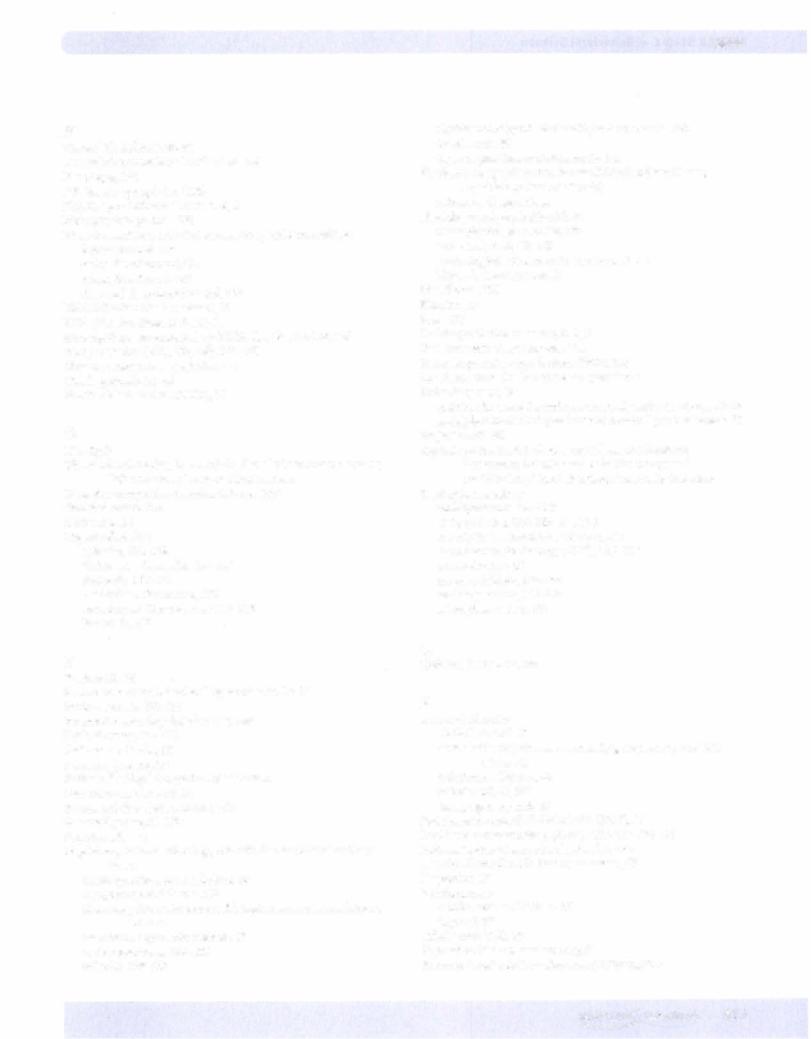
Index
N
Narcissistic defenses, 85-86
Narcissistic personality disorder, 157, 159 Narcolepsy, 125
NE. See Norepinephrine (NE) Negative prediction measures, 8-9, 9 Neurophysiologic tests, 100
Neurotransmitters, 177-179. See also by specific transmitters depression and, 148
eating disorders and, 151 schizophrenia and, 145
sleep and sleep disorders and, 125 NNH (Number Need to Harm), 13 NNT (Number Need to Treat), 13
Non-rapid eye movement sleep (NREM), 119, 119-120, 121 Norepinephrine (NE), 125, 148, 177-178
Normal pressure hydrocephalus, 171 Null hypothesis, 24-26
Number Need to Treat (NNT), 13
0
Obesity, 3
Observational studies, 12-15, 14-15. See also Case-control studies; Cohort studies; Cross-sectional studies
Obsessive-compulsive disorder, 152, 158, 159 Occipital cortex, 175
Odds ratio, 14 Organic disorders
aphasias, 172-176
delirium vs. dementia, 167-168 dementia, 167-171 hemispheric dominance, 172
neurotransmitter overview, 177-179 Tourette's, 167
p
P-value, 24-26
Pain management, behavioral approaches to, 80-81 Panic disorders, 152-153
Paranoid personality disorder, 156, 159 Parietal cortex, 174-175
Parkinson's disease, 171 Passive aggression, 90
Patients. See Physician-patient relationship Pearson correlation, 27, 28
Personality disorders, 156-158, 159 Personality tests, 99-100
Phobias, 151-152
Physician-patient relationship, 129-139. See also Ethical and legal issues
CAGE questions for alcoholism, 52 components ofsick role, 132
fostering patient adherence with treatment recommendations,
133-134
mandatory reportable diseases, 46 review questions, 135-139
rules for, 129-132
significance ofgood relationship and rapport in, 133 transference, 92
types ofquestions and statements, 132
Physicians and psychiatrists. See also Ethical and legal issues; Physician-patient relationship
substance abuse and, 56 Physiologic and physical health, 51
neurophysiologic tests for, 100 personality tests, 99-100
psychological adjustment to stressors, 97-98 Type A behavior patter, 97
Pick disease, 170 Placebos, 15 Pons, 177
Positive prediction measures, 8-9, 9 Post-traumatic stressdisorder, 154 Preferred provider organization (PPO), 210
Prevalence rates. See Incidence and prevalence Probability rules, 18
addition for mutually and non-mutually exclusive events, 17-18 multiplication for independent and non-independent events, 17
Projection, 85-86
Psychology. See Anxiety disorders; Defense mechanisms; Depression; Learning and behavior therapy and modification; Mood disorders; Personality disorders
Psychopharmocology antidepressants, 184-187 antipsychotics, 182, 182-184, 184
anxiolytics (antianxiety), 189-190, 190 electroconvulsive therapy (ECT), 186-187 for alcoholism, 53
mood stabilizers, 188-189 review questions, 191-194 schizophrenia and, 145
Q
Quinlan, KarenAnn, 195
R
Race and ethnicity alcoholism and, 52
causes of death patterns in minority groups compared with whites, 48
infant mortality and, 49 suicide and, 41, 109 teen pregnancy and, 62
Randomized controlled clinical trial (RCT), 15 Rapid eye movement sleep (REM), 119, 1 19-120, 121 Rationalization (defense mechanism), 89-90 Reaction formation (defense mechanism), 90 Regression, 87
Reinforcement
reinforcement schedules, 76
types of, 75 Relative risk (RR), 13
Repression (defense mechanism), 88 Resource-based relative-value scale (RBRVS), 212
MEDICAL 217
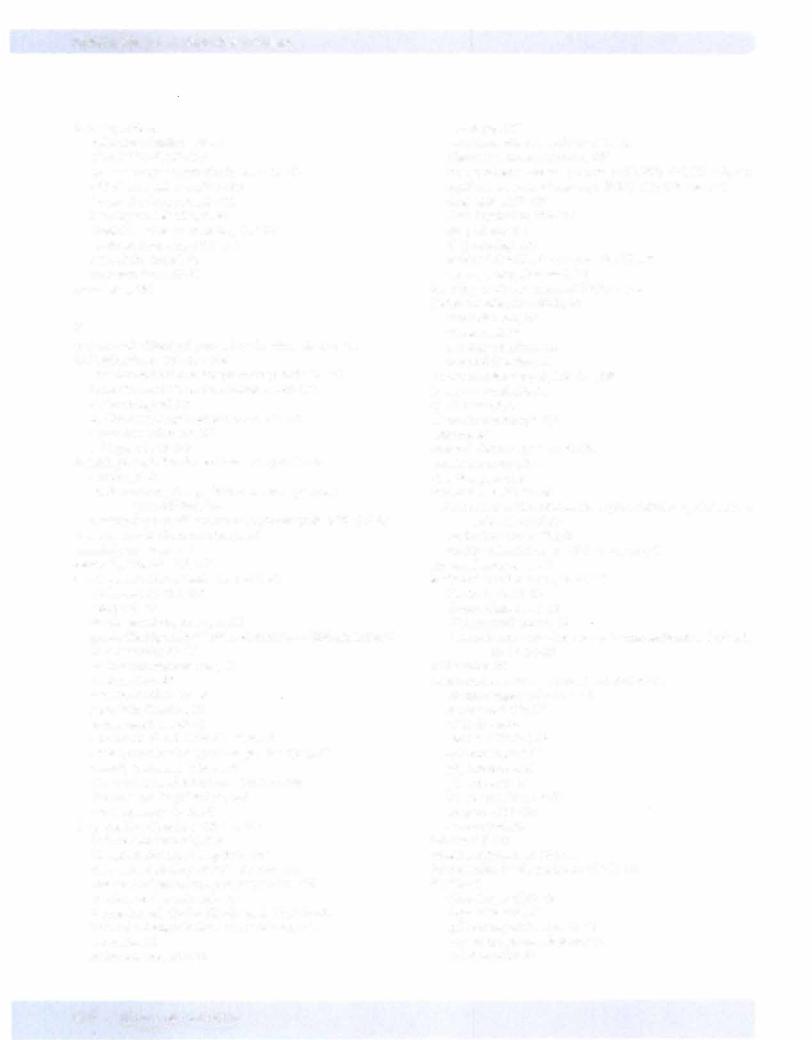
USMLE Step 1 • Behavioral Science
Review questions
defense mechanisms, 93-95 DSMV IV and, 160--165
epidemiologyand statistics, 9, 14, 18, 30--38 ethical and legal issues, 203-207
human development, 1 13-117 learning and behavior, 82-84 physician-patient relationship, 135-139 psychopharmocology, 191-194
sexual behavior, 68-71 substance abuse, 57-59
Roe v. Wade, 196
s
Schizoid and schizotypal personality disorder, 156--157, 159 Schizophrenia, 89, 143-147, 156
attention andinformation processing deficits in, 146 brain abnormalities and anomalies in, 145-146 epidemiology of, 143
medications, relapse and prognosis, 146--147 neurochemical issues, 145
subtypes of, 143-144
Screening tests, 7. See also Incidence and prevalence accuracy, 8-9
positive and negativepredictive measures (post-test probabilities), 8-9
sensitivity and specificity meaures (pre-test probabilities), 7-8, 9 Seasonal Affective Disorder (SAD), 148
Sensitivity measures, 7, 9 Serotonin, 125, 145, 148, 178
Sexualbehavior in the United States, 61-71 adolescent, 61, 105, 106
aging and, 67
female sexual response cycle, 64
gender identity and preferred sexual partner ofbiologic males, 65 homosexuality, 66--67
male sexual response cycle, 63 masturbation,66
orgasm disorders, 65--66 paraphilic disorders, 65 review questions, 68-71
se>..Llal arousal and desire disorders, 65
sexual pain disorders (psychological in origin), 66 sexually transmitted disease, 63
side effect ofmedications and, 183, 185-186 Tanner stages for pubic hair, 105
teen pregnancy, 61--63, 62
Sleep and sleep disorders, 119-128, 154 bed-wetting (enuresis), 128 biologic rhythms and sleep facts, 120
changes in daily sleep over the life cycle, 123 chemical and psychiatric correlates of, 124-125 delirium vs. dementia and, 168
depression and bipolar disorder and, 125, 148-149 hormonal changes in first 3 hours ofsleep, 122 insomnia, 127
melatonin and, 122-123
narcolepsy, 125
neurotransmitters associated with, 125 nightmares and night terrors, 127
non-rapid eye movement sleep stage (NREM), 119, 119-120, 121 rapid eye movement sleep stage (REM), 119, 1 19-120, 121 sleep apnea, 125-126
sleep deprivation, 122-123 sleep latency, 120 sleep-walking, 128
Sudden Infant Death Syndrome (SIDS), 126 teeth-grinding (bruxism), 128
Smooth pursuit eye movement (SPEM), 146 Socioeconomic status (SES), 40
alcoholism and, 52 divorce and, 39
in eating disorders, 151 in mood disorders, 149
Somatform disorders, 87, 154-155, 155 Spearman correlation, 28
Specific rates, 5, 6 Specificitymeasures, 7-8, 9 Splitting, 86
Standard deviations, 20--22, 21-22 Standardized rates, 5, 6
Statistical power, 26 Statistical tests, 27, 27-29
Statistics. See also Biostatistics; Descriptive statistics; Epidemiology; Inferential statistics
on death and mortality, 43
suicide vs. homicides in U.S. by age group, 43 Stress and stressors, 97-98
Study design and research, 14-15, 16 bias in, 9-12, 11-12
clinical trials, 14-15, 16 FDA approval process, 15
observational studies (case-control; cross-sectional and cohort), 12-15, 14-15
Sublimation, 92
Substance abuse. See also Alcohol and alcoholism adverse symptoms by drug, 56
anabolic steroids, 55 CNS effects, 55 Ecstasy (MDMA), 55 epidemiology of, 56 physicians and, 56 physiology of, 51 review questions, 57-59 sleep and, 124-125 summary of, 54
Substance P, 179
Substitutedjudgment, 195, 197
Sudden Infant Death Syndrome (SIDS), 126 Suicide, 48
clinical signs of, 43-44 depression and, 148 epidemological facts on, 41-42 rates ofby age and ethnicity, 109 risk factors for, 42
218 MEDICAL

Index
statistics on, 40-41
statistics on teen suicide, 40--41
suicide vs. homicides in U.S. by age group, 43 Suppression, 92
T
t-tests, 27, 28-29
Tardive dyskinesia (TD), 182-183 Tasaroff decision, 196 Teenagers. See Adolescence Teeth-grinding (bruxism), 128 Temporal cortex, 174
Tourette's disorder, 167, 181 Transcortical aphasia, 173 Transference, 92 Trazodone, 187
Type A behavior pattern, 97
u
Undoing (defense mechanism), 90
v
Valproic acid, 188-189 Vascular dementia, 169 vs. Alzheimer's, 170
Venlafaxine, 187
w
Wechsler Memory Scale, 100 Wernicke (aphasia), 53, 172 Wilson disease, 171
MEDICAL 219
